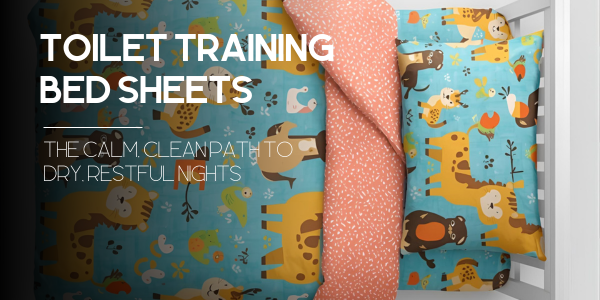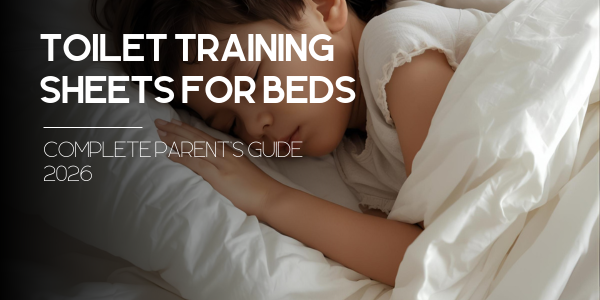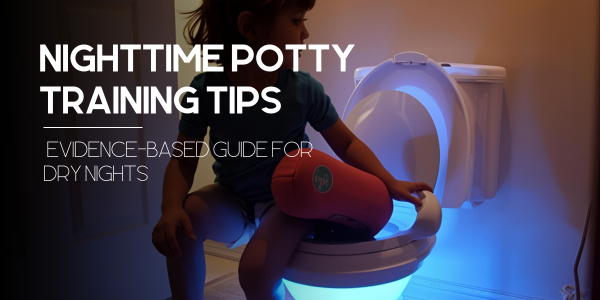Why Rubber Sheet for Bed Wetting Are The Worst For Kids
Breaking the Bed-Wetting Taboo
Bed wetting doesn’t just soak sheets—it soaks up confidence, leaving families scrambling for solutions that often miss the mark. As parents, we juggle empathy and practicality, praying for an overnight cure. Enter Chooniez bed-wetting solutions, where we believe dignified design and cutting-edge science can rewrite the narrative.
Uncovering the Hidden Struggle
Imagine your child’s silent shame, the hushed mornings spent stripping bedsheets before anyone else wakes. It’s a cycle of guilt—for them, for you. Yet, conversations remain in the shadows, leaving myths untouched.
It’s time to shine light on the struggle. By sharing stories, tips, and breakthroughs in sleep science & technology insights, we empower families to move from reactionary fixes toward proactive comfort.
The Power of Open Conversations
Talking about bed wetting shouldn’t feel clinical or cold. It should feel warm—like a cozy bedtime chat. When we swap rubber sheets for empathetic dialogue, children breathe easier. They learn that accidents don’t define them; solutions do.
At Chooniez, we champion products that whisper “you’ve got this,” such as our organic sleeping bag for incontinence, designed for silent support and breathable comfort.
Discover Our Organic Sleeping BagUnderstanding Bed-Wetting & Incontinence
Prevalence & Emotional Impact
Did you know up to 15% of children between ages 5–7 still experience bed wetting? That percentage may sound small—but each number represents a child waking in panic, a parent consoling in quiet.
Beyond the numbers lies a swirl of emotions: embarrassment, isolation, even shame. When parents validate feelings—rather than punish—they plant seeds of confidence that grow stronger than any plastic protector ever could.
Ready to take control? Explore our full range of bed-wetting solutions crafted to comfort and empower.
Traditional Management Strategies
Alarm Systems & Night Lights
Bed-wetting alarms detect moisture at the first drop, jolting kids awake. Paired with soft night lights, they create cues—but can also alarm parents at 3 AM. While alarms train muscles, they seldom address comfort.
Behavioral Approaches
Many families adopt fluid management, bladder exercises, or reward charts. These tactics work—sometimes. Yet without a snug, silent barrier beneath, every sheet change can undo progress and erode patience.
For a solution that marries behavior training with quiet confidence, consider the bed-wetting throw blanket—a soft shield that protects mattresses and spirits alike.
What Is a Rubber Sheet for Bed Wetting?
A rubber sheet for bed wetting is a waterproof barrier placed directly on the mattress to catch nighttime accidents. Whether crafted from natural latex or synthetic vinyl, its core promise is simple: keep the mattress dry. Yet beneath that promise lie critical differences in material, performance, and health impact.
Natural Rubber vs. Synthetic Vinyl
Material choice drives everything—from breathability to allergy risk. Natural rubber (latex) boasts elasticity and biodegradability, while synthetic vinyl (PVC) offers durability and cost-efficiency.
| Material | Description | Pros | Cons |
|---|---|---|---|
| Natural Rubber (Latex) | Harvested from rubber trees, renewable. | Stretchy, biodegradable, soft to the touch. | Can trigger latex allergies; pricier. |
| Synthetic Vinyl (PVC) | Petrochemical–based polymer, low cost. | Highly waterproof, inexpensive, easy-clean. | Non-biodegradable; off-gassing of plasticizers. |
Beyond material, these sheets come in various sizes—from crib to twin XL—and textures, like smooth or quilted. Innovations in sleep science & technology continue to refine how waterproofing meets comfort.
The Hidden Drawbacks of Traditional Rubber Sheets
Comfort & Sleep Quality
The telltale crinkle of rubber sheets can jolt even the heaviest sleeper awake. Add poor temperature regulation—sticky heat in summer, chill in winter—and you get a recipe for restless nights and groggy mornings.
Skin & Health Concerns
PVC sheets often contain phthalates and other plasticizers that can off-gas volatile organic compounds (VOCs). For children with sensitive skin or respiratory issues, this can mean irritation or even allergic reactions.
Environmental Impact
Once they wear out, most rubber sheets end up in landfills. Natural rubber breaks down slowly; PVC may linger for centuries, leaching microplastics into ecosystems.
Aesthetic & Psychological Effects
That “hospital-bed” vibe—plain gray or green plastic—can feel clinical and cold. Children resist them, undermining compliance. When every night feels like a chore, confidence erodes faster than moisture seeps through.
Looking for a modern alternative? Discover innovative bed sheets for bed wetting that marry form, function, and child-friendly design.
Browse All Waterproof BeddingReimagining Bed-Wetting Protection: The Future Is Now
Move Beyond Rubber: Next-Gen Materials
Picture a lightweight shield so soft it drapes like a second skin—no crackle, no chill. Next-generation protectors layer moisture-wicking textiles atop breathable membranes to whisk away dampness before it meets the mattress. Thanks to breakthroughs in sleep science & technology, these fabrics regulate temperature while guarding against leaks, offering uninterrupted rest for kids (and relief for parents).
Design That Empowers
Who says function can’t be fun? Vibrant prints, soft scalloped edges, and concealed fasteners transform bedtime from chore to cheerful ritual. By weaving child-friendly graphics into every layer, we nurture confidence—one dry morning at a time.
Eco-Friendly Innovations
Reusable liners crafted from recycled polyester and compostable barrier films shrink your carbon footprint without sacrificing performance. Forget tossing plastic after every accident—these champions of sustainability keep going through wash after wash.
Why Game-Changing Waterproof Sheets Matter
Traditional rubber sheets trap heat and spark resistance. But revolutionary waterproof fabrics—heralded in our game-changing waterproof sheets guide—deliver silent, stretch-to-fit security that feels more like bedding than a barrier.
A Better Alternative to Rubber Sheets
Meet Chooniez: Brand Philosophy
At Chooniez, we believe every child deserves a night of confident sleep. Our ethos blends three pillars: Comfort (ultra-soft surfaces), Confidence (secure, noiseless protection), and Care (non-toxic, eco-conscious materials).
Key Features & Benefits
- Whisper-Quiet Comfort: No crackle, no cling—just peaceful slumber.
- Hypoallergenic Layers: PVC-free, latex-free, and gentle on sensitive skin.
- Rapid-Dry Core: Locks moisture in seconds, keeping sheets—and spirits—dry.
- Machine-Washable Durability: Built for hundreds of cycles without losing shape.
Side-by-Side Comparison
| Feature | Traditional Rubber Sheet | Chooniez Protector |
|---|---|---|
| Noise | Loud & Crackly | Whisper-Quiet |
| Comfort | Sticky, Hot | Cool, Breathable |
| Materials | PVC or Latex | Eco-Friendly, Hypoallergenic |
| Design | Plain Plastic | Fun Prints & Soft Edges |
Real Stories
“Switching to the bed-wetting throw blanket was life-changing for our 8-year-old. She finally looks forward to bedtime!” — The Martinez Family
“Our pediatrician recommended the organic sleeping bag for incontinence. It’s the only protector she hasn’t complained about.” — Dr. Kim, Pediatric Specialist
Browse Our Full Chooniez CollectionsDIY Hacks & When to Choose Pre-Made Solutions
Quick Fixes
Towel Layering
Stack a soft bath towel under your fitted sheet to catch small leaks. It’s simple, it’s cheap—and it works in a pinch. Just fold twice for maximum absorption. But remember: layered towels shift during sleep, so morning laundry may still surprise you.
Waterproof Pillowcases
Pillow leaks? Believe it or not, kids sometimes aim high. Slip on a waterproof pillowcase beneath the standard cover. It keeps fluff fresh and prevents midnight surprises—no full sheet change required.
Plastic Wrap Myths
Wrapping the mattress in plastic? That’s a diaper for your bed—and it feels every bit as crispy. Skip the cling film trick; it traps heat, crinkles with every turn, and invites sweaty nights. Instead, opt for breathable layers.

When DIY Falls Short
DIY solutions have their place: they’re fast and wallet-friendly. Yet they rarely deliver long-term comfort. Towels slip, plastic traps heat, and pillowcase hacks ignore mattress-wide spills. More than once, DIY has left parents elbow-deep in soggy laundry at dawn.
For expert guidance on cleanup, see our step-by-step on how to clean a mattress after bed wetting .
Why Invest in Quality Protectors
Premium protectors aren’t just “nice to have”—they’re game-changers. Imagine a whisper-quiet, stretchy shield that locks in moisture in seconds. No sliding, no crinkle, just peace of mind for you and a confident child drifting into dreams.
Our signature bed-wetting throw blanket combines ultra-absorbent fibers with fun prints and effortless cleanup. One wash, and it’s ready for round two—night after night.
Explore All Chooniez ProtectorsRubber Sheet for Bed Wetting FAQ
What is the best rubber sheet for bed wetting?
The “best” combines total waterproofing with breathability and comfort. Seek non-toxic, latex-free materials that hug the mattress without noise. At Chooniez, our throw blanket and organic sleeping bag merge performance with kid-friendly design.
How do I clean a rubber sheet for bed wetting?
Spot-clean with mild soap and warm water, then air-dry flat. For deeper messes, machine wash on gentle cycle—if the label allows—and line-dry to preserve waterproof coatings.
Are rubber sheets safe for kids?
Traditional PVC sheets may off-gas VOCs. Look for hypoallergenic, phthalate-free options. Chooniez uses eco-certified fabrics that meet the highest safety standards.
What alternatives exist to rubber sheets?
Breathable textile protectors, stretch-fit waterproof blankets, and washable incontinence pads offer silent, comfortable, and eco-friendly protection.
Can rubber sheets cause allergies?
Yes—natural latex can trigger reactions in sensitive children. Always check for hypoallergenic labels and consider synthetic-but-safe alternatives.
How often should I replace my bed-wetting protector?
Replace whenever waterproof performance diminishes or after 100–200 wash cycles. Regular inspection ensures leaks don’t sneak through worn seams.
Do mattress protectors stop odors?
Quality protectors seal in moisture and odors, preventing musty buildup. For extra freshness, choose antimicrobial fabrics or wash with vinegar and baking soda.







Leave a comment